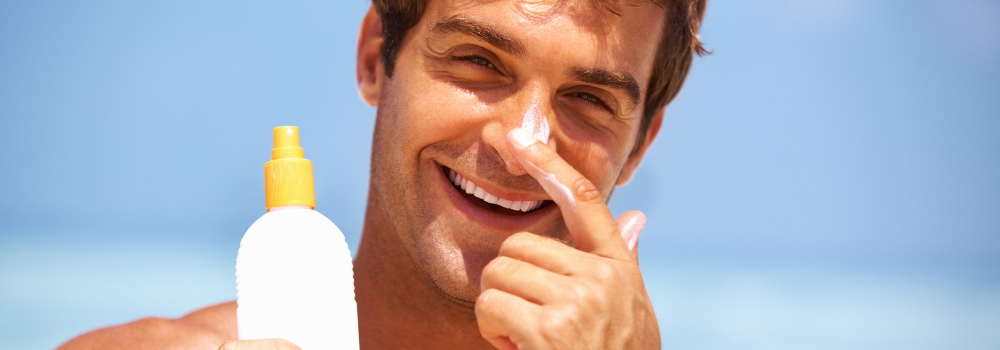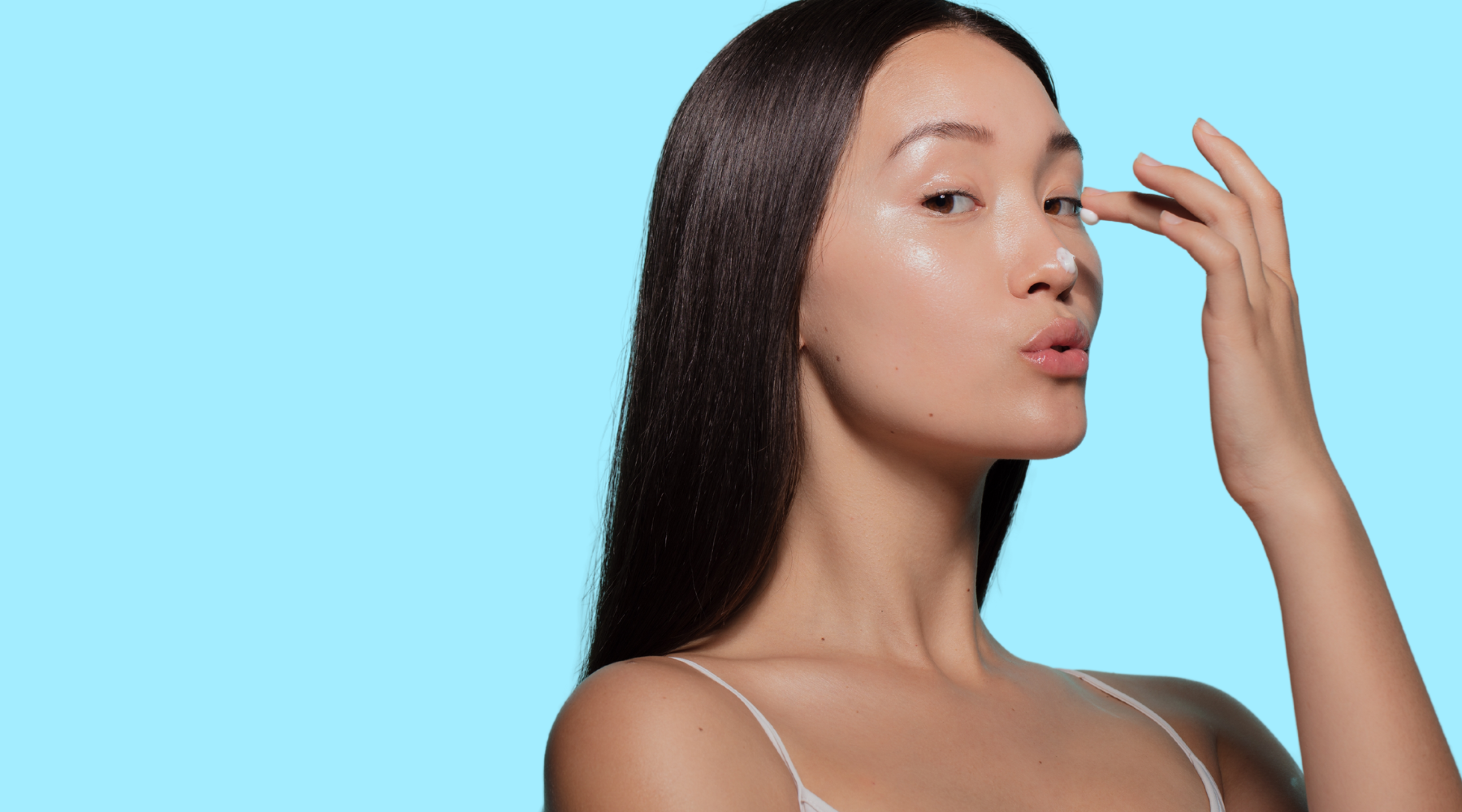
BREAKING DOWN SPF: WHY IT’S IMPORTANT ALL YEAR ROUND
The Science of SPF and Its Importance
Sun Protection Factor (SPF) is a crucial element in skincare, serving as a defense against the harmful effects of the sun's ultraviolet (UV) radiation. SPF measures the level of protection a sunscreen provides against UVB rays, the primary cause of sunburn and a significant contributor to skin cancer. However, understanding the importance of SPF requires delving into the science of UV radiation and its impact on the skin.
While a comprehensive skincare routine involving cleansers, moisturizers, and serums is crucial for maintaining healthy, glowing skin, all these efforts can be undermined if your skin is constantly exposed to the sun without protection. No matter how advanced or effective your skincare products are, they cannot fully counteract the damage caused by UV radiation!
A tan, often perceived as a healthy glow, is actually a sign of skin damage. When your skin tans, it's producing more melanin in response to UV exposure, which is a defense mechanism against further injury. This increased melanin production can lead to long-term consequences such as hyperpigmentation, premature aging, and an elevated risk of skin cancer.
Therefore, incorporating sunscreen into your daily skincare routine is non-negotiable. It acts as a shield, protecting your skin from harmful UV rays and preserving the benefits of your other skincare products. By preventing sun damage, sunscreen helps maintain the integrity of your skin, ensuring that your skincare efforts are not in vain.

UVA and UVB Rays: The Double-Edged Sword
The sun emits two types of harmful rays that reach the earth: UVA and UVB. UVA rays penetrate deeper into the skin, reaching the dermis, the thickest layer of the skin. These rays are primarily responsible for premature aging, such as wrinkles and age spots, and can exacerbate hyperpigmentation and melasma. They also play a role in the development of skin cancers.
UVB rays, on the other hand, affect the outer layer of the skin, causing sunburn and directly damaging DNA in skin cells, leading to skin cancer. Both UVA and UVB rays are implicated in the development of melanoma, the deadliest form of skin cancer.
Types of Sunscreen: Physical vs. Chemical
Sunscreens can be broadly categorized into physical (mineral) and chemical types. Physical sunscreens contain active mineral ingredients like zinc oxide or titanium dioxide, which sit on the skin's surface and reflect UV radiation but also absorb some as well. Physical sunscreens are often not the best option for those with darker skin tones as they can often leave a white cast.
Chemical sunscreens, in contrast, contain organic (carbon-based) compounds such as oxybenzone, avobenzone, and octinoxate, which absorb UV radiation and convert it into heat, which is then released from the skin. Chemical sunscreens tend to be more cosmetically elegant and feel more lightweight on the skin. However, those with extra sensitive skin should always patch test before applying all over their face.

Photo Credit: Life in a Cold Climate
Asian Sunscreen vs. Western Sunscreen
Asian sunscreens, particularly those from South Korea and Japan, are renowned for their advanced formulations that provide broad-spectrum protection with a lightweight, non-greasy feel. These sunscreens often incorporate innovative filters like Tinosorb S and M, Uvinul A Plus, and Mexoryl SX, which offer superior UVA protection and photostability.
In contrast, Western sunscreens, especially those in the US, often feel heavier and greasier. This is partly due to the stringent FDA regulations. The FDA has not approved any new UV filters since the 1990s, leaving American consumers with fewer options for effective and cosmetically elegant sunscreens. This regulatory lag means that American consumers do not have access to the latest and potentially more effective sun protection technologies available in Europe and Asia. Come on FDA - get your act together!

Applying Sunscreen: How, When, and Where
We often under-apply sunscreen to avoid our faces feeling heavy and greasy. However, it is essential to apply the correct amount to get the adequate and accurate sun protection as stated on the product's label. Correct application of sunscreen is essential for optimal protection. Here are some guidelines:
-
How to Apply: Use about a shot glass worth of sunscreen (approximately 1 ounce) to cover your entire body. For the face, a nickel-sized dollop is usually sufficient. Ensure even coverage and don’t forget often-missed spots like the ears, back of the neck, and tops of the feet.
-
When to Apply: Apply sunscreen 15-30 minutes before going outdoors to allow it to bind properly to the skin. If you are outdoors and sweating a lot, it's advisable to reapply every two hours, or immediately after swimming, sweating, or towel drying.
-
Indoors and By Windows: UV rays can penetrate windows, so it's essential to wear sunscreen indoors, especially if you spend a lot of time near large windows and on a particularly sunny day and/or high UV index day. Opt for a broad-spectrum sunscreen to protect against both UVA and UVB rays.

The key to effective and adequate sun protection is to maintain the sunscreen "film" layer on your face. This is why we prefer cream/lotion products instead of spray sunscreen. Spray sunscreen is hard to control and you often do not get an even layer of protection all over your face - instead you get concentrated areas of sunscreen with patches of no protection at all.
Sunscreen and Skin Health: Beyond Sunburn Protection
Regular use of sunscreen can prevent hyperpigmentation and acne. UV exposure can worsen hyperpigmentation and cause dark spots and melasma. Sunscreen helps protect the skin from these effects, promoting an even skin tone.
For acne-prone skin, choosing a non-comedogenic sunscreen can help prevent breakouts. Physical sunscreens are often recommended for sensitive or acne-prone skin due to their lower potential for irritation, however most chemical sunscreen nowadays (outside of the US-made sunscreens) tend to be safe and non-irritating, even for those with sensitive skin.

Finding the Right Sunscreen for Your Skin Type
-
Oily Skin: Look for oil-free, non-comedogenic, and mattifying sunscreens. Gel and water-based formulations are often suitable.
-
Dry Skin: Choose sunscreens with added moisturizers, such as hyaluronic acid or glycerin. Cream-based sunscreens provide additional hydration.
-
Sensitive Skin: Opt for physical sunscreens with zinc oxide or titanium dioxide. Avoid fragrances and alcohol, which can cause irritation.
-
Combination Skin: Use a lightweight, broad-spectrum sunscreen that provides hydration without feeling greasy. Formulations that balance moisture and oil control are ideal.
Sunscreens that are "Smood Approved"
Find the right sunscreen is often a trial and error process - just like skincare. The most important thing is finding a sunscreen the works best for your skin and something that you will actually enjoy putting on your skin every day. This is why we often recommend to stay away from chalky, heavy sunscreens that leave a white cast or pill. This will definitely NOT make you want you to consistently apply sunscreen to protect your skin! These sunscreens are quite universal, have been tested and Smood approved on sensitive and acne-prone skin!

- Elta MD - UV Clear
- Supergoop - Unseen Sunscreen
- Round Lab - Birch Juice Sunscreen
- Beauty of Joseon - Rice + Probiotics
- Biore UV - Watery Essence Aqua Rich
- Haruharu Wonder - Black Rice Sunscreen
- Bondi Sands - Daily Moisturizing Face Sunscreen
Conclusion
SPF is a vital component of daily skincare, offering protection against the harmful effects of UV radiation year-round. Understanding the science behind UV rays and sunscreen types can help you make informed choices for your skin health. Despite regulatory limitations in the US, finding the right sunscreen and applying it correctly can significantly reduce the risk of skin damage, hyperpigmentation, and skin cancer. Remember, consistent and proper use of sunscreen is the key to maintaining healthy, youthful skin.



Leave a comment
This site is protected by hCaptcha and the hCaptcha Privacy Policy and Terms of Service apply.